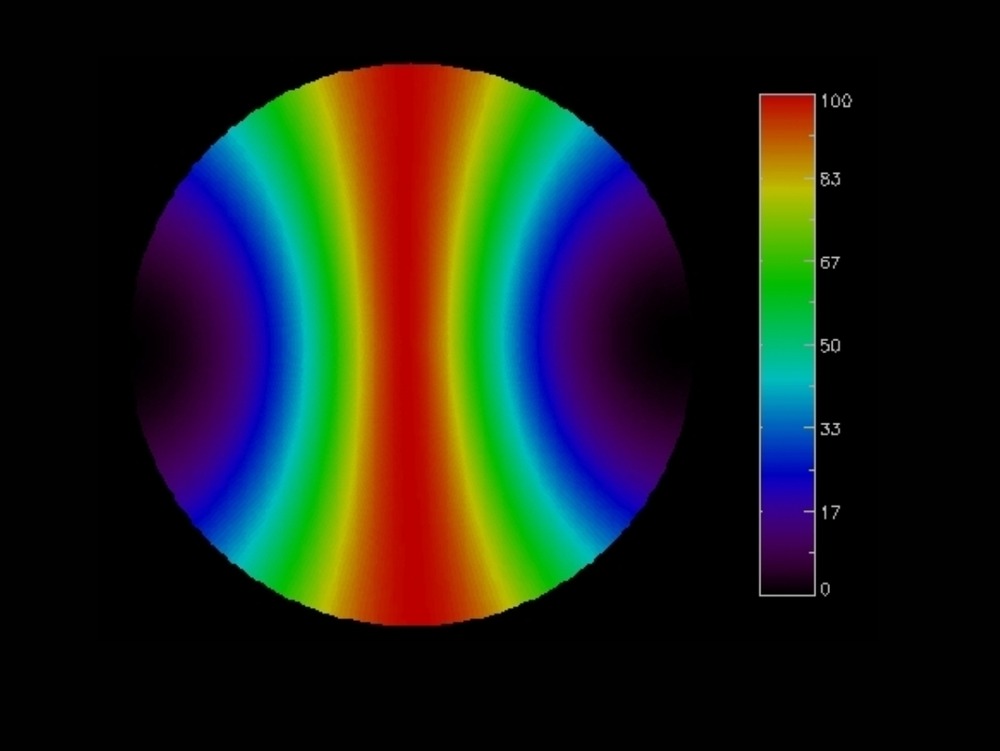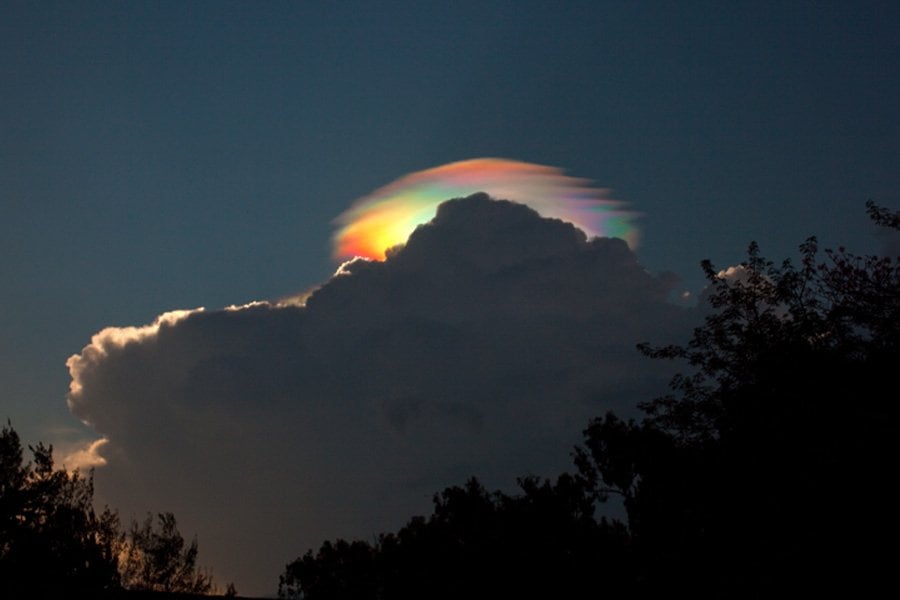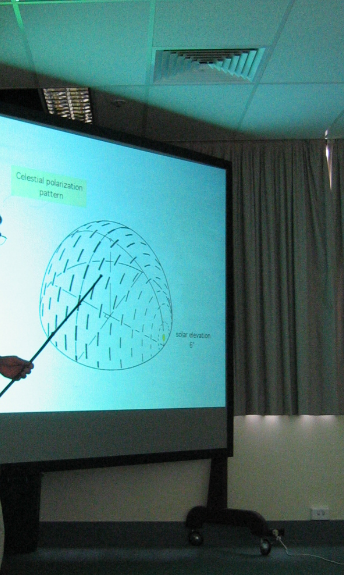A little while back btm posted this which I found interesting:
My sunglasses are polarised; if I tilt my head to the right (so my right ear is resting on my right shoulder) the sky appears to become a deeper blue and the contrast in the clouds increases (dark parts become darker and light parts become lighter.) I’ve noticed that this makes it easier to spot things like aeroplanes. Tilting my head to the left has the opposite effect: the sky becomes lighter blue and the cloud contrast decreases. If I look east, though, the effect is reversed: tilting my head to the left darkens the blue of the sky and increases the contrast. Tilting my head in either direction has no effect if I’m looking south or north. Just donning the sunglasses and looking east or west darkens the sky a little; looking in the half-cardinal directions (NE, SE, SW, NW) give the appearance of a gradual change from light (in the north or south) to dark (east or west) in the blueness of the sky.
Obviously the glasses are polarised diagonally, with the direction of polarisation of both lenses the same. A quick check confirms this and establishes that it’s top left (from my POV, but from the front) to bottom right. What I find intriguing, though, is that daylight is polarised only if it comes from east or west, but not from north or south. This provides me with a (daytime-only) non-magnetic compass.
…
This trick relies on the observed polarization pattern of the daytime sky described by the https://en.m.wikipedia.org/wiki/Rayleigh_sky_model
Within the atmosphere, Rayleigh scattering of light by air molecules, water, dust, and aerosols causes the sky’s light to have a defined polarization pattern. The same elastic scattering processes cause the sky to be blue. The polarization is characterized at each wavelength by its degree of polarization, and orientation (the e-vector angle, or scattering angle).
The polarization pattern of the sky is dependent on the celestial position of the Sun. While all scattered light is polarized to some extent, light is highly polarized at a scattering angle of 90° from the light source. In most cases the light source is the Sun, but the Moon creates the same pattern as well. The degree of polarization first increases with increasing distance from the Sun, and then decreases away from the Sun. Thus, the maximum degree of polarization occurs in a circular band 90° from the Sun. In this band, degrees of polarization near 80% are typically reached.
Degree of polarization in the Rayleigh sky at sunset or sunrise. The zenith is at the center of the graph.
When the Sun is located at the zenith, the band of maximal polarization wraps around the horizon. Light from the sky is polarized horizontally along the horizon. During twilight at either the vernal or autumnal equinox, the band of maximal polarization is defined by the north-zenith-south plane, or meridian. In particular, the polarization is vertical at the horizon in the north and south, where the meridian meets the horizon. The polarization at twilight at an equinox is represented by the figure to the right. The red band represents the circle in the north-zenith-south plane where the sky is highly polarized. The cardinal directions (N, E, S, W) are shown at 12-o’clock, 9 o’clock, 6 o’clock, and 3 o’clock (counter-clockwise around the celestial sphere, since the observer is looking up at the sky).

Degree of polarization in the Rayleigh sky at sunset or sunrise. The zenith is at the center of the graph.
.
Note that because the polarization pattern is dependent on the Sun, it changes not only throughout the day but throughout the year. When the sun sets toward the South, in the northern hemisphere’s winter, the North-Zenith-South plane is offset, with “effective” North actually located somewhat toward the West. Thus if the sun sets at an azimuth of 255° (15° South of West) the polarization pattern will be at its maximum along the horizon at an azimuth of 345° (15° West of North) and 165° (15° East of South).
During a single day, the pattern rotates with the changing position of the sun. At twilight, it typically appears about 45 minutes before local sunrise and disappears 45 minutes after local sunset. Once established it is very stable, showing change only in its rotation. It can easily be seen on any given day using polarized sunglasses.
Many animals use the polarization patterns of the sky at twilight and throughout the day as a navigation tool. Because it is determined purely by the position of the Sun, it is easily used as a compass for animal orientation. By orienting themselves with respect to the polarization patterns, animals can locate the Sun and thus determine the cardinal directions.
…
It is thought that these polarization patterns are an aid to direction finding for insects as well as for migratory birds.
The Moon creates the same polarization pattern. Thus it is possible to use the polarization patterns as a tool for navigation at night. The only difference is that the degree of polarization is not quite as strong.

